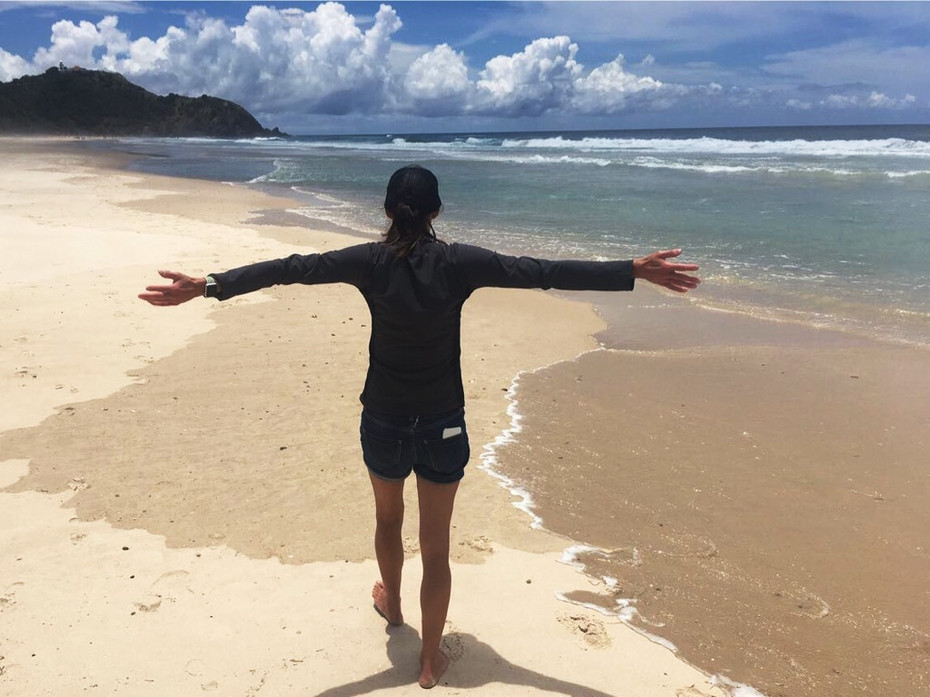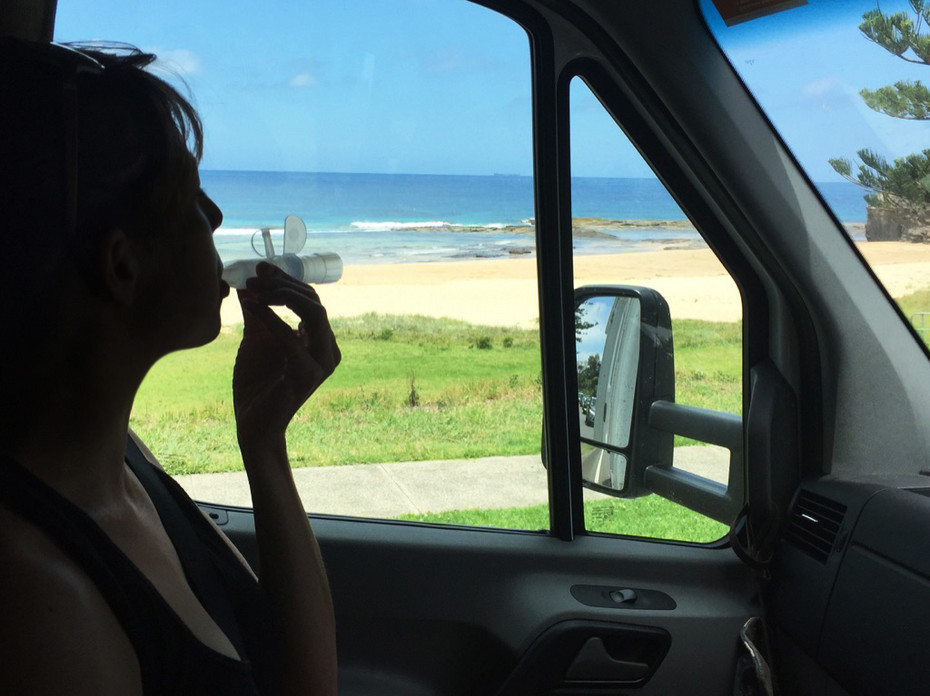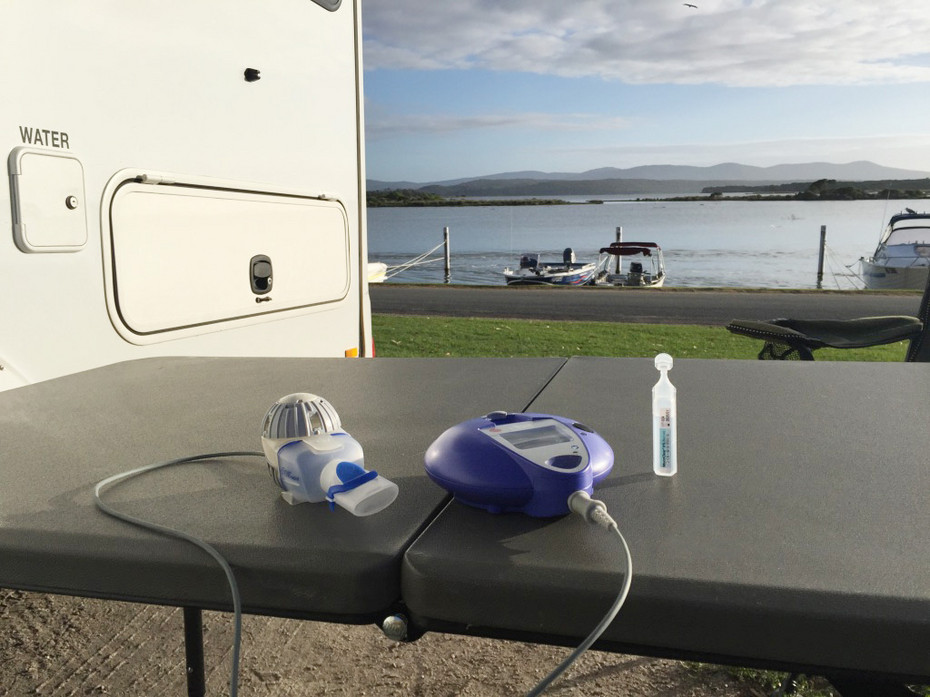
A trip to Australia would no doubt be special for anyone, but for me, the trip “Down Under” was both a dream journey and a potential risk, because I have cystic fibrosis (CF). It is a genetic disorder destroying my lungs bit by bit. A long journey which involves, at a minimum, a 23-hour flight might be too much for my lungs to handle. But in the winter of 2017 I drove along the Australian east coast in a camper van for three weeks anyway. It was the most wonderful trip of my life.
We were on the road almost every day. Luckily my husband did all the driving on our holiday. He called himself my chauffeur. But this way I was able to use our time for therapy. For the first time in my life I didn’t have to get up an hour-and-a-half earlier than the rest of the family to take care of my therapy before the “normal” day started. My husband started the engine, I put batteries into the eFlow and off we went.
On the days when we didn’t drive anywhere, I used my nebuliser outside the camper van – of course only when the rest of the campground was still asleep. I did neglect my stretching and mobilisation exercises during our holiday though because it was too cramped in the camper, and I didn’t have the time with our packed travel itinerary. Instead, I used the PEP S System, a compact respiratory therapy device for secretion mobilisation, more often during the drive. Storing my medications was also not without its complications - outdoor temperatures were up to 34°C, and the camper became extremely hot when we left it for outings. Many medications should not be stored over 25°C because they go bad. So I stored the majority of them in the camper van’s refrigerator. Unfortunately, there wasn’t much room left in there for food.


To be honest, I don’t like camping too much because I have to use public toilets and showers which tend to have worse hygienic conditions than your bathroom at home, i.e. more viruses and bacteria. In particular, the microbe Pseudomonas aeruginosa, which thrives in moist environments, is a problem for people with CF. For example, it’s swirled into the air when a toilet is flushed with the lid up. Some campground toilets don’t even have lids. Pseudomonas can colonise the lungs of CF patients, causing terrible inflammation. One reason we chose to get a camper van was so we could have our own toilet and shower. What I hadn’t thought about before starting the trip was that Pseudomonas can develop in the camper van’s water tank. This was problematic in several ways. Better not to shower, wash my face or brush my teeth with the water from the tank. So I ended up using the bathrooms at the campgrounds anyway. Incidentally, the water was treated with chlorine. When washing the dishes, rinsing vegetables and fruit with the tank water I had a bad feeling that I was still at risk of ingesting Pseudomonas. So, I almost exclusively used water that we bought at supermarkets. When it became clear that driving around with aa toilet that isn’t emptied daily is rather unappetizing when it’s 34°C outside, we occasionally freedom camped. I was so glad to have my broad-spectrum antibiotic with me.
Australia’s east coast is definitely a suitable travel destination for CF patients – apart from the inhumanely long flight. The sea air, the warm climate and low smog levels are ideal for people with lung problems. In addition, Australia has strict anti-smoking laws. All hotels, hostels, restaurants, cafés and pubs etc. are 100% non-smoking. Smoking is even banned from outside areas, such as pub terraces and gardens, and from entrances. Something I noticed right away was that in Australia, people smoke less than for example in Germany. Over our 3-week holiday I saw only 20 smokers – yes, I actually counted! I met most of them in Sydney and Melbourne - the handful I met on the coast were mostly (German) tourists.
Alex (pseudonym), who was born in 1977, has cystic fibrosis. She is a freelance editor and has one child. She writes personal stories for the PARI blog about living with cystic fibrosis and the challenges associated with the disease, and she gathers practical tips on the topics of breathing and nebuliser therapy.
Note: The statements made in the report are the individual view of the person reporting. They do not necessarily reflect the PARI view or the general state of science.
An article written by the PARI BLOG editorial team.
© 2025 PARI GmbH Spezialisten für effektive Inhalation